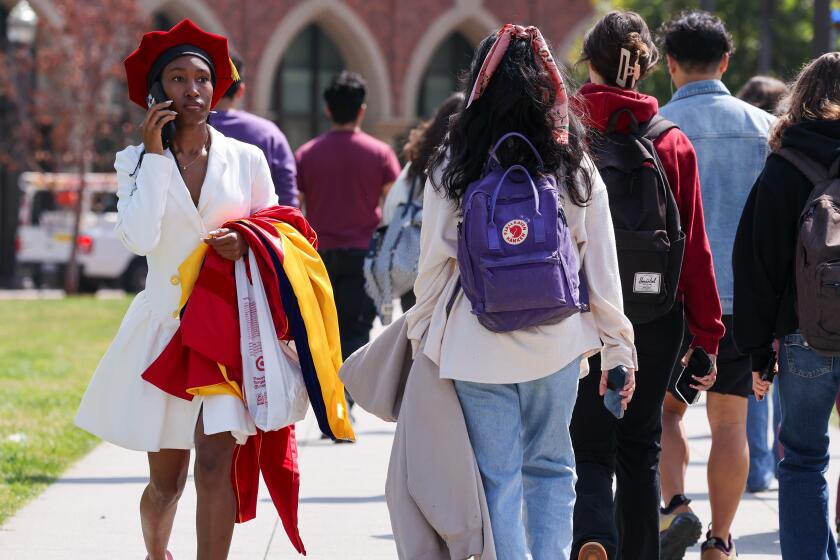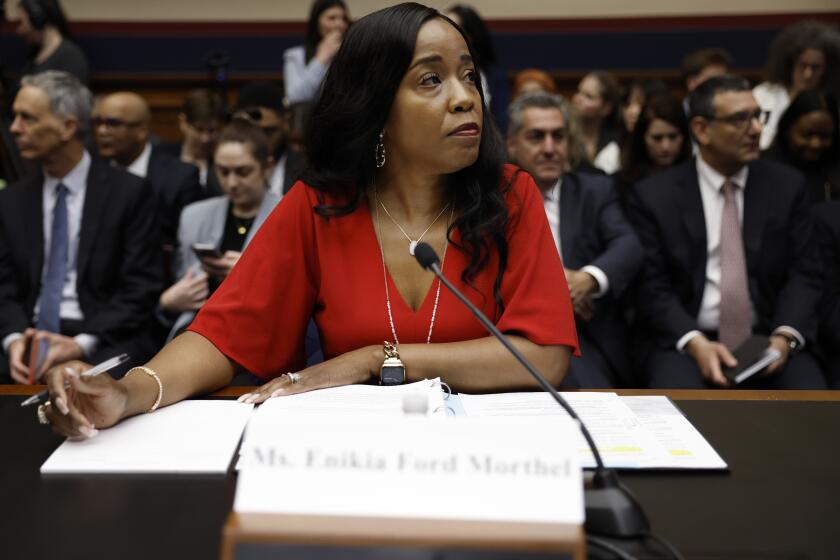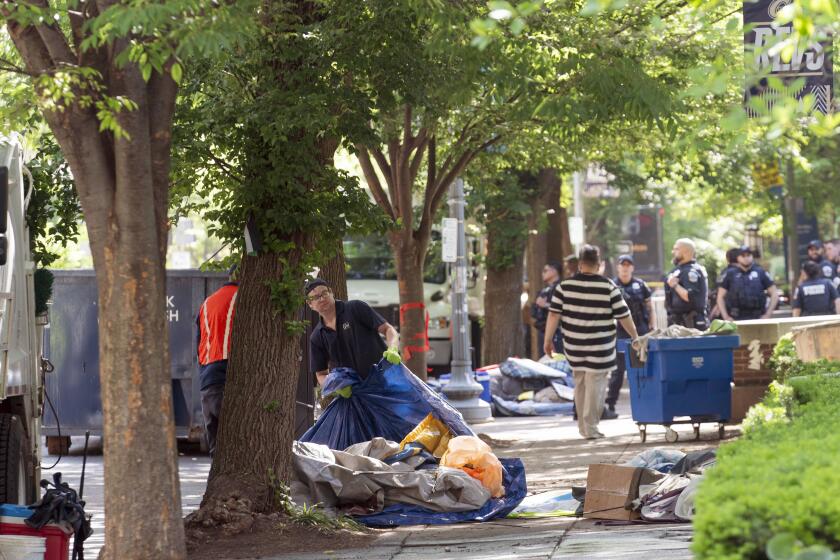New Fresno School Doubles as Laboratory
To critics, one of the problems in public education has been its failure to follow private industry’s example by making sure its product is up to date and works the way it is supposed to.
The school district in this sprawling agricultural town believes it is well on its way to addressing that problem by opening its own educational think tank. At the brand new David L. Greenberg Elementary School, instructional models are being tested in a laboratory environment outfitted with an array of whiz-bang gadgetry.
“This is a very large leap in a different direction” for Fresno, said Carolyn Calmes, the principal. “We’re stepping out on our own here.”
While there are other so-called demonstration schools in the state, where teachers can hone their abilities, local educators said that what makes Greenberg especially unusual is the combination of technology and theory in a public school setting.
Some of the technological breakthroughs include a stage in the cafeteria that is set up for wireless microphones. Several areas of the campus have wireless connections to the Internet, which means a teacher who needs to get away from it all can stroll to the tree-lined rear yard and log on to the Internet.
But one of the most noteworthy innovations is the two-way mirrors in seven classrooms. Using the mirrors, outsiders can observe a class without intruding on it, Calmes said. In the ordinary classroom, visitors must walk into the room to watch what is going on. No matter how skillful the teacher is at introducing the visitor and bringing the class back to attention, the outsider is disruptive.
From behind the mirrors, Calmes said, visiting teachers can watch a lesson without the students’ even knowing they are under observation.
The next step will be to install cameras capable of focusing on a single student anywhere in the class.
Because the student won’t know he is being watched, “you won’t have a child on his best behavior,” Calmes said.
Some are concerned about allowing third parties to spy on teachers. “I think there’s some potential for abuse here,” said Wayne Johnson, president of the California Teachers Assn. “Having mirrors in the room, not knowing who’s there, is a bit disconcerting to me.”
Calmes understands those worries, but said all teachers on her staff were told about the mirrors when they applied to work at Greenberg. She said the mirrors will not be used to evaluate a teacher’s performance. Further, teachers will be told in advance when they will be on display.
“It will not be a surprise-type thing,” Calmes said. “We will let them know.”
Another thing that sets this educational laboratory apart is that eight coaches are on campus to assist teachers in everything from math to English.
In just its second week of operation, instructors from several schools have been brought in to sharpen their skills, said Calmes. The goal is to test teaching methods to see what works and what doesn’t. Another feature of Greenberg’s educational approach is that it is standards-based, meaning there will be no grades as such. Students must prove they have mastered certain skills.
The school is too new to know whether this laboratory approach will substantially improve student achievement in Fresno’s schools. But local educators hope that it could serve as a model, not just for Fresno, but for elsewhere.
“We’re ecstatic about this school and its program,” said Interim Supt. Dolphas Trotter.
All these educational bells and whistles didn’t come cheaply. While a normal school costs $6 million, Greenberg cost $8.5 million.
One of the things the administrators at the Fresno Unified School District is most proud of is that the students benefiting most directly from this educational think tank are those most in need. The students at the school come from an older area of apartment houses and duplexes populated by poor Latino and Southeast Asian families.
“We as a district have tremendous problems with students achieving at the level we want.
“We’re constantly trying to improve the delivery of instruction,” Trotter said.
More to Read
Start your day right
Sign up for Essential California for news, features and recommendations from the L.A. Times and beyond in your inbox six days a week.
You may occasionally receive promotional content from the Los Angeles Times.






